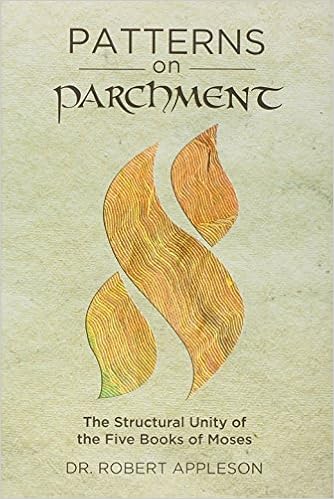

Dr. Robert Appleson’s book, Patterns on Parchment – The Structural Unity of The Five Books of Moses, is not easy reading for me – he is a person of mathematics, and I am a person of the humanities and the social sciences. Yet it is a powerful weapon in the arsenal with which Torah Judaism wages the war against the Documentary Hypothesis.
To whit, if there can be established recurring patterns throughout the five books of the Torah, the case that the work is the product of a single author is greatly strengthened. If those patterns are intricate and complex, the case is readily made that the Author was divine.
In part of the book Dr. Appleson illustrates the problems of the Documentary Hypothesis, including the elucidation of the great 19th century scholar and Gadol b’Torah Rabbi David Zvi Hoffmann zt”l, the rector of the Hildesheimer Seminary in Berlin (and predecessor of my personal hero, Rabbi Avraham Eliyahu Kaplan zt”l).
Other mathematicians have tried to demonstrate the intricacies of the Torah’s patterns via the Bible Codes. Dr. Appleson focuses not on the patterns of letters, but on patterns of themes.
The key, to discerning the recurring themes, is an understanding of the little-studied structure of parshiyos pesuchos (sections of Torah that end with a gap from the last letter of the section until the end of the line of text – with the next section beginning on the next line) and parshiyos situmos (sections of the Torah that end with a gap of nine letters between the end of the section and the beginning of the next session – which thus begins on the same line).
Dr. Appleson’s work is an elaboration and expansion of builds on the work of Rabbi Yehoshua Honigwachs in his 1991 book The Unity of Torah. Rabbi Honigwachs proposed an organizing principle based on five thematic links within the Ten Commandments. Dr. Appleson calls these links, which emerge from the Midrash Halachah known as the Mechilta, “Shared Principles.”
1. Respecting creation
2. Loyalty to primary relationship
3. Limited access to sanctity/resources
4. Duties of testimony/community
5. Accepting one's place/status (with ties to land/future)
Taking the position that parshiyos pesuchos are primary sections, while parshiyos situmos are subsections, Dr. Appleson demonstrates that the principles recur in discernible, consistent patterns throughout the Torah.
Dr. Appleson tries to avoid language that would turn off a non-mathematician. At least in my case, he has not succeeded in the attempt. Those inclined to think mathematically will enjoy the book and find it stimulating. For those inclined to think creatively and unsystematically (like myself) it is a bit of a slog!
While Dr. Appleson would be the first to admit that no one approach refutes the Documentary Hypothesis in and of itself, this book goes far in highlighting the unity of the Torah. Indeed, even were one to just gain the insights into the parshiyos pesuchos and situmos developed in the work, one would emerge greatly edified from the perusal of ,Patterns on Parchment – The Structural Unity of The Five Books of Moses.

No comments:
Post a Comment